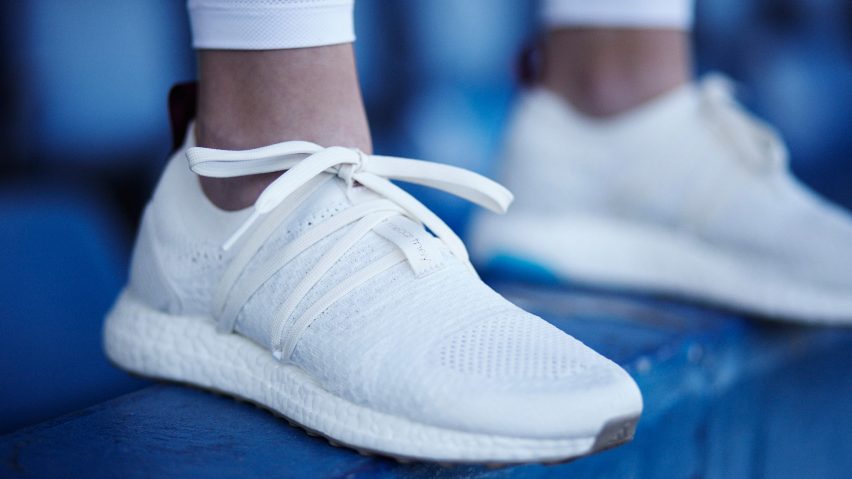As the state of the environment becomes an ever-pressing issue, designers are developing eco-friendly alternatives to all sorts of products. To celebrate Earth Day, we've rounded up 10 examples, including a kitchen made from recycled bottles and a pollution-absorbing bikini.
Adidas x Parley for the Ocean trainers
The first Parley Ocean Plastic trainers, which are made from plastic recovered from the sea, were unveiled as a prototype during an event at the United Nations headquarters in New York in July 2015. They were then launched as a limited edition of 50 pairs to coincide with World Oceans Day last year, and have since received a stylish makeover from fashion designer Stella McCartney.
Read more about Adidas x Parley for the Ocean's trainers ›
Kungsbacka kitchen units by Form Us With Love for IKEA
Kungsbacka is IKEA's first kitchen made from recycled plastic bottles and reclaimed industrial wood. Twenty-five plastic bottles are used in each of the units, which were designed by Swedish studio Form Us With Love to make "sustainability available for everyone".
Read more about the Kungsbacka kitchen units ›
Seabin by Pete Ceglinski and Andrew Turton
The Seabin is a floating rubbish bin that can be installed in marinas to filter litter from the water. The floating bin is attached to a water pump that continuously sucks water into the container, separating rubbish or liquids such as oil and detergent.
Sponge Bikini by Mihri Ozkan and Cengiz Ozkan
This bikini is made from a sponge-like material that repels water but absorbs oils, designed to help filter impurities from water and turn swimming to an "eco-friendly activity".
Read more about Sponge Bikini by Mihri Ozkan and Cengiz Ozka ›
For her Protein project, Silva-Dawson explored the possibility of replacing polymers derived from fossil fuels with an organic waste material that can perform in the same way. The result was a series of compression-moulded vessels made from cow's milk.
Read more about Protein by Tessa Silva Dawson ›
Pińatex leather alternative by Ananas Anam
Materials company Ananas Anam developed a way to turn pineapple waste into an animal-friendly alternative to leather. Factories in the Philippines separate the strands and felt them together into a non-woven fabric that can be used for clothes, footwear or furniture.
Read more about Pińatex leather alternative ›
Edible six-pack rings by Saltwater Brewery
Florida-based Saltwater Brewery used by-products from the beer-making process to create six-pack rings that can safely be eaten by marine wildlife. The team initially experimented with seaweed but soon realised it became too rigid outside of water – which meant it might cut or choke an animal. Instead, they moulded wheat and barley left over from the brewing process.
Read more about the edible six-pack rings by Saltwater Brewery ›
Current Window by Marjan van Aubel
These colourful windows by Dutch designer Marjan van Aubel are made up from coloured solar cells that harvest energy from the sun and convert it into electricity to charge small computer devices.
Read more about Current Window ›
Small Transparent Speaker by People People
This speaker by People People is intended as a reaction against excessive consumer waste, particularly electronic waste. It has built-in sensors that detect when parts need to be replaced, repaired or updated, and notifies users via their smartphones.
Read more about Small Transparent Speaker ›
30 Year Sweatshirt by Tom Cridland
Hoping to promote sustainable fashion, UK menswear designer Tom Cridland created a unisex sweater that comes with a 30-year guarantee, which allows the wearer to send it off for free repairs – to prevent them from throwing it away.
Read more about 30 Year Sweatshirt by Tom Cridland ›

